
 TEA
TEA
For wholesale purchase of tea/ tea bags, kindly log on to www.teabagsindia.com
To ensure an invigoration cup of the noblest quality, our master hand are working right from its plantation to the final aroma.
COSMOPOLITAN can legitimately take the credit of recognizing the importance of Tea Bags for the tea market. Our Tea Bag manufacturing unit is fully automated with sophisticated machineries from Germany, Italy and Argentina which lend an exquisite and enviable finish to the product.
Presently we manufacture PRIME brand of Tea bags (Assam Blend).
Some of our renowned clienteles are – Cafe Coffee Day, Jivraj, Jayashree Tea, Wagh Bakree.

Besides, we are in process of launching flavoured tea bags, and premium range of tea in packets in eastern India of following flavours:
- Green Tea
- Green Lemon tea
- Green Chamomile
- Green Jasmine
- Darjeeling Tea
- Lemon Tea
- Ginger Tea
- Cardamon Tea
- Masala Tea
 Coffee
Coffee
Introduction
Coffee in India is grown in one of the world’s rainiest inhabited region that receives 2,500 to 4,000 mm rainfall spread over 100 days, followed by more than 100 days of continuous dry period. Indian coffee is grown under a thick natural shade. Cosmopolitan is one of the largest manufacturer and exporter of both the types of coffee, – PURE INSTANT SPRAY DRIED COFFEE & PURE INSTANT GRANULATED COFFEE.
Key Markets and Export Destinations
India is the seventh largest coffee producer in India and the third largest in Asia.
In 2013-14, India’s coffee exports stood at 313,025 metric tons, generating a revenue of US$ 793.22 million
India exports coffee to over 45 countries, over 50 per cent of Indian exports in 2013-14 headed to Europe.
Italy is the largest market importing more than 25 per cent from India, followed by Germany, Belgium, Turkey and the Russian Federations.
Types:
PURE INSTANT SPRAY DRIED COFFEE
If consumer loves a nice flavor and good taste of coffee, then this is the right product. It is made from a blend of Arabica and Robusta coffee beans of the quality of highest order and carefully picked and classified for the purpose. Cosmopolitan manufactures Spray dried instant coffee from 100 % coffee beans, which are roasted, ground, extracted, concentrated, and spray dried by the latest available and evolved technology – the result is a cup of invigorating coffee. The coffee produced is then packed into bulk or retail deployment based on requirements.

| S No. | Quality Attributes | Limit |
| 1 | Moisture content | < 3.5% |
| 2 | Ash content (on dry basis) | > 6% |
| 3 | Caffeine content (on dry basis) | > 2.5% |
| 4 | Solubility in hot water, 96 +/- 2 deg.C | Dissolves within 30 seconds with moderate stirring |
| 5 | Average particle size | 200 – 300 micron |
| 6 | Free flow bulk density | 0.200 – 0.250 g/cc |
| 7 | Color | Medium – dark brown |
| 8 | Sediments | Negligible (0.1 – 0.5 mg/100 g) |
| 9 | pH | 4.7 – 5.1 |
| 10 | Flowability | 40 – 44 ml |
| 11 | Foreign matter | Absent |
| 12 | Additives | Absent |
| 13 | Microbiology SPC E Coli Yeast & mould |
< 3000 / g Absent < 100 / g |
| 14 | Organoleptic Evaluation | Standard taste & flavour of coffee with no major deviation and / or off flavours |
PURE INSTANT GRANULATED COFFEE
This product resembles roast & ground coffee in appearance and uses the best of the coffee beans, carefully chosen for this purpose. This product is a brown granulated Instant Coffee produced from a blend of Arabica & Robusta coffee beans. Cosmopolitan uses the traditional method of agglomerating that maintains the rich freshness of coffee. The essential feature of this process is that in a plane of falling powder stream, a jet of steam is allowed to mix with powder to make it immediately wet. This step causes coffee particles to come in contact one another providing the opportunity for collision. Thus, the falling powder is agglomerated into what is commonly known as granulated coffee – or in coffee lovers’ lingo – a stimulating cuppa coffee.
| S No. | Quality Attributes | Limit |
| 1 | Moisture content | < 3.5% |
| 2 | Ash content (on dry basis) | > 6% |
| 3 | Caffeine content (on dry basis) | > 2.5% |
| 4 | Solubility in hot water, 96 +/- 2 deg.C | Dissolves within 30 seconds with moderate stirring |
| 5 | Average particle size | 200 – 300 micron |
| 6 | Free flow bulk density | 0.200 – 0.250 g/cc |
| 7 | Color | Medium – dark brown |
| 8 | Sediments | Negligible (0.1 – 0.5 mg/100 g) |
| 9 | pH | 4.7 – 5.1 |
| 10 | Flowability | 40 – 44 ml |
| 11 | Foreign matter | Absent |
| 12 | Additives | Absent |
| 13 | Microbiology SPC E Coli Yeast & mould |
< 3000 / g Absent < 100 / g |
| 14 | Organoleptic Evaluation | Standard taste & flavour of coffee with no major deviation and / or off flavours |
 Rice
Rice
COSMOPOLITAN supplies finest varieties of Indian Rice both Basmati and Non-Basmati in its own as well as buyer brand and packaging, in bulk and variety of consumer packs. It has rice processing plants where technologically advanced machineries are used for each sequenced step in the conversion process and collectively, these processing plants have a processing capacity of 1500 tons per day.
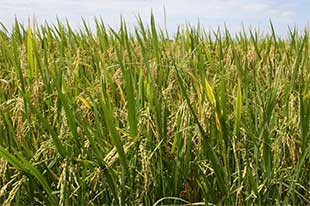
To get the perfect of Rice:
- Good quality is used with the right moisture content (14%) and high purity.
- Mixing of different varieties of paddy is avoided as these result in degraded quality of rice.
- Rice mills are kept clean and well maintained. They judiciously operated by our highly skilled operators.
- Best commercial milling system are executed to reduce mechanical stress and heat buildup in the grain, thereby minimizing grain breakage and producing uniformly polished grain, free of impurities, colour and off-type kernels such as chalky or damaged kernels.
- In our modern rice mills, many adjustment (e.g. rubber roll clearance, separator bed inclination, feed rates ) are automated for maximum efficiency and ease of operation.
- Best grader ere use to grade the milled rice to remove the broken and sorting them into well defined fraction of deferent length. Optical inspection is the final quality control and enhancement step in the rice mill.
- To achieve a uniform and consistent quality packed white rice the various white rice fraction are blended according to the market requirement and trade standards .
The byproducts generated at the different stages of rice milling like rice hulls or husk, rice bran, and brewer’s rice are also product we deal in.
List of Non-basmati Rice which we export are:
| Full grains | 4% Max |
| Small brokens less then 1/4 grain length | 20% Max |
| Chalky grains | 6% Max |
| Damage/discolour grains | 1.5% Max |
| Moisture | 13.5% Max |
| DOUBLE POLISH SORTEX CLEAN QUALITY | – |
| Full grains | 5% Max |
| Damage/discolour grains | 2% Max |
| Black grains | 0.5% Max |
| moisture | 13.5% Max |
| SORTEX CLEAN QUALITY | – |
Basmati Rice
The world’s most relished Basmati rice is cultivated in the foothills of Himalayas. Soil and climate of the region account for the unique aroma, taste and texture of basmati rice. The word ‘Basmati’ comes from the Hindi language, meaning ‘Queen of Fragrance’. Basmati has a fine aromatic flavor with long and slender grains. Its perfumed, nutlike flavor and aroma can be attributed to the fact that the grain is aged, to decrease its moisture content. When cooked, it swells only lengthwise, thereby resulting in long slender grains that are dry, separate and fluffy.
List of Basmati rice which we export:
Steam Basmati Rice
Pusa 1121 Sella Rice
Parboiled Sharbati Rice
Pusa 1121 White Rice
Parboiled Basmati Rice
Grains Classification

Parameters

WHEAT
Wheat is a type of grass grown all over the world for its highly nutritious and useful grain. It is one of the top three most produced crops in the world, along with corn and rice. Wheat has been cultivated for over 10,000 years and probably originates in the Fertile Crescent, along with other staple crops. A wide range of wheat products are made by humans, including most famously flour, which is made from the grain itself.
Today, wheat is a grass that grows between two and four feet (½ to 1 ¼ meters) tall. The physical appearance of the grain is familiar to most consumers, with a long stalk that terminates in a tightly formed cluster of plump kernels enclosed by a beard of bristly spikes. Wheat is an annual, which means that at the end of each year, fields must be plowed and prepared again to grow the grass.
We are one of the outstanding firms, engaged in offering premium quality Indian Wheat. This wheat is used for making flour, bread, biscuits, etc and is full of vitamins & proteins. The offered wheat is extensively demanded among all our clients spread all over the globe due to its high quality and purity. Grown under the supervision of our experienced agro experts, the provided wheat is free from pesticide & insecticide.
Types of wheat offered by us: Indian Wheat, Winter Wheat, Spring Wheat
| Gluten (On wet basis) | 24% Min. |
| Protein | 11 to 12% Min. |
| Moisture | 12% |
| Test weight | 78 kg/HL Min |
| Foreign Matter | 2% Max |
| Damaged Grains | 2% Max |
| Falling Nu | 300 Min |
| Shrivelled / Shrunken & Broken | 6% Max |
| Other Food Grains | 2% Max |
| Weevilled & Bored Grains | 2% Max |
 SORGHUM
SORGHUM
Grain Sorghum (Jwar) is one of the most important cereal crop grown in India and is also the fifth most important cereal crop grown in the world. India is the world’s second largest producer of grain sorghum. The grain is also drought tolerant and heat tolerant which is especially important in arid regions. It is recognized to be the most important farm crops behind corn, soybean and wheat. Sorghum is now finding demand primarily as poultry feed, secondarily as cattle feed and in brewing applications.
After global presence in the following cereals like, Rice, Wheat, Corn, Soybean etc, COSMOPOLITAN is now regular exporting finest varieties of sorghum to Africa and other parts of the globe.
COSMOPOLITAN is a leading exporter of sorghum, white sorghum, yellowish sorghum, seed and pure sorghum in bulk & PP Bags packing.
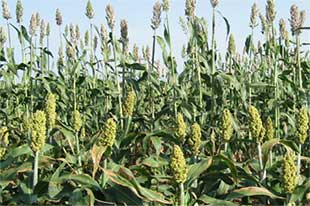
| Variety | White & Yellow |
| Moisture | 13% Max |
| Purity | 99% Min |
| Weeviled Seeds | 1% Max |
| Aflatoxin | 30 PPB Max |
MAIZE(CORN)
Maize is an annual cereal crop, belonging to the grass family of ‘Gramineae’. It composes of kernels having long ears. These kernels are used in the form of grains as food for both humans and animals and also as a source of oil. Maize is also known by the name of ‘corn’ in many countries. Maize or corn is a rich source of carbohydrates, Vitamin B, proteins and minerals. Most of commercial maize grows at a maximum height of 2.5 ft. In India, maize is also known as ‘bhutta’ in Hindi.
In countries like United States, Australia and Canada, it is known as corn. It has a nutritional value for both animals and humans. The word maize means “one that sustains life”. Hybrid maize is one the variety of maize which generally have a high yield level and that is why it is most favored by the farmers. Other varieties of Maize are Sweet corn, Dent corn, Flint corn, Popcorn, Flour corn, Sweet corn and Pod corn.
Main Maize producing states in India are:
India’s produces around 10-14 million tons of maize annually. This contributes to about 2% of the total world production. Mostly the southwestern countries import maize from India. Maize in India is generally produced as ‘Kharif’ crop, which means that it is usually produced in the summers. Karnataka, AP, Bihar, MP. UP and Rajasthan are the main maize producing areas. It is also produced in Assam, Chhattisgarh, Haryana, Jharkhand, Tamil Nadu, Uttarakhand, Gujarat, HP, Jammu Kashmir, and Orissa. Punjab, West Bengal etc. Expiry rate of maize is fixed according to Nizamabad mandi. Apart from Nizamabad, Karimnagar in AP is also a delivery centre. In Maharashtra, Jalna and Jalgaon are the delivery centre’s while in Karnataka, Davengere is a delivery centre. Nimbaheda in Rajasthan, Ratlam in MP and Bahraich in UP are the delivery centre’s which are approved by the NCDEX.
COSMOPOLITAN is one of the leading exporters of yellow maize/corn for animal feed, human consumption (machine clean) with the largest supplier network speared throughout India catering to every part of the world.
| Commodity | INDIAN YELLOW MAIZE |
| Test Weight | 72 KG / HL |
| Moisture | 14 % Max |
| Foreign Matter | 2 % Max |
| Admixture | 2 % MAX |
| Weevilled Seeds | 1 % Max |
| Damaged by insects, Immature & discoloured |
3 % Max |
| Brokens | 3 % Max |
| Aflatoxin | 10 TO 20 PPB |
BARLEY SEEDS
Source of nutritional contents like vitamin B, vitamin E, and folic acid, our Barley Seeds are extremely beneficial for animals. We are recognized as one of chief Barley Seeds Exporters in the national and international markets. Our Barley Seeds are natural laxative that offers great health to the animals; increasing their productivity. We are one of the leading suppliers and exporters of barley seeds to ranchers, dairy farmers, stables and feedlot operators worldwide.

MILLETS
Millets are small-seeded grasses which are highly nutritious, non-glutinous and not acid forming foods , grown majorly in India and Ukraine. We offer machine cleaned quality – 99.5 % and 98.0%.
| Broken seeds | 2% |
| Other seeds | 0.5% |
| Shrivelled grains | 1% |
| Foreign Matter | 1% |
| Moisture | 12 % MAX |
Edible Oil
Cooking oil is plant, animal, or synthetic fat used in frying, baking, and other types of cooking. It is also used in food preparation and flavoring that doesn’t involve heat, such as salad dressings and bread dips, and in this sense might be more accurately termed edible oil.
Palm oil
1.RBD Palm Oil
Palm oil is the most traded vegetable oil leader in the world today and obtained from refining crude palm oil. RBD Palm oil is used as frying oil for food industries; it can also be used in manufacturing of margarine, shortening, vanaspathy, ice cream etc.
Soyabean oil is used in Frying and general purpose, Salad dressing, Margarine, Mayonnaise, Cooking oil etc.
2.RBD Palm Stearin
RBD Palm Stearin is the solid fraction obtained by fractionation of palm oil after crystallization at a controlled temperature. Though it is a co-product of the palm oil, it nevertheless is major oil in the international trade. Palm stearin is a source of fully natural hard fat component for products such as shortenings and margarine industries.
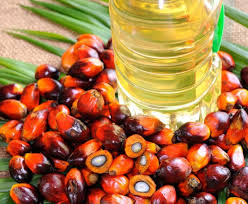
Soyabean Oil – Fully Reined Quality:
Soyabean oil is high in polyunsaturated fat and low in saturated fat. The oil is cholesterol-free and rich in vitamin E. It is light in color and has neutral taste.
Soyabean oil is used in Frying and general purpose, Salad dressing, Margarine, Mayonnaise, Cooking oil etc.

Rapeseed / Canola Oil – Refined Quality
The oil is naturally rich in monounsaturated fat and low in saturated fat. Use in frying / backing, (bottled) salad oil and in mayonnaise, margarine and dressing of salad.
Sunflower Oil – Refined Quality
Sunflower Oil is light in taste and appearance. The oil is rich in vitamin E, monounsaturated and polyunsaturated fatty acid and is cholesterol-free to provide optimal health and strengthen the body’s immune system.

Ground Nut Oil – Refined Quality
Liquid oil for cooking or frying as general purpose oil.
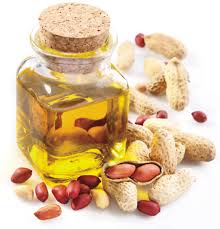
Corn Oil – Refined Quality
Corn oil obtained by cold pressing has a bland taste but it is high in polyunsaturated fats. It is one of the healthier oils. Corn oil is effective in lowering blood cholesterol levels and fighting cardiovascular disease.
Liquid oil used in salad dressing, mayonnaise, cooking, baking or frying as general purpose. It gains a pleasant taste when mixed with soybean oil and milk thistle oil.
It is recommended to be stored in a cool, dark place, out of direct sunlight.
Cosmopolitan’s Activities:
COSMOPOLITAN has been mainly importing RBD Palmolein, Crude Palm Oil, Crude Degummed Soya bean Oil, etc. The import of various types of Edible Oils is done after taking stock of the demand and consumption pattern in India. COSMOPOLITAN has been active on all the major ports i.e. Kandla, Mumbai, Kolkata, Cochin, Kakinada, Mangalore. The oil imported is being sold in the domestic market to the processors, traders and other users in bulk.
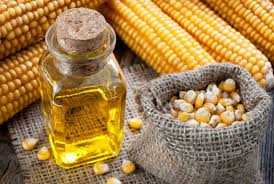
 Soybean Meal
Soybean Meal
Soybean meal is the most used vegetable protein feed in the production of animal feeds. Soybean is sent for crushing to get oil and cake which is further sent to extraction for removal of residual oil and to obtain its meal. Soybean meal is considered premium to other oil meals due to high protein content.
Soy meal is the world’s most important vegetable protein feed source accounting for nearly 65 % of World protein feed demand. About 98 percent of soy meal is used as an animal feed ingredient, with the remainder used in human foods such as bakery ingredients and meat substitutes.

| Protein | 46% |
| Moisture | 12% |
| Sand Sillica | 2.5% |
| Fibre | 6% |
| Urease Activity | 0.30 mg |
Cosmopolitan is one of the largest exporter of Soybean Meal to Iran and other countries.
Rapeseed meal
Rapeseed meal (Canola Meal) is used basically in animal feed due to its protein content of 36-38%.
Producers: China, India, Canada, European Union-27 and Japan are the other major producers of rapeseed – canola meal.
Exporters: Canada is the world’s largest exporter having market share of around 50% in world trade followed by India and China.
Major Markets: E.U. is the biggest consumer of rapeseed meal in world. The EU-27 is already using considerable amounts of rapeseed meal in animal feed, however, there is still room for further expansion .United States is the biggest importer of Canadian canola meal. Mexico, Ireland, Taiwan, Indonesia, Thailand, China and Vietnam are the other buyers for Canadian meal. Bangladesh, South Korea, China, Malaysia, Philippines, Taiwan, Indonesia, Japan, Singapore, Thailand and Vietnam are the main buyers for Indian rapeseed meal.
Futures: Rapeseed or Canola meal is not traded on any exchange in world. Traders and Exporters looking to hedge their risks have to use canola and rapeseed futures.

Rice Bran
Rice Bran is a by-product produced from milling. Rice Bran was once thrown away after the milling process because its health benefits hadn’t yet been discovered. But now rice bran enjoys multitudes of scientific studies that clearly demonstrate its many health-benefiting components.
One of the most well known benefits of rice bran is that it’s high in dietary fibers. This makes it a very wise choice for those of you looking for gentle elimination solutions. By promoting bowel regularity, you significantly increase your body’s ability to process the foods that you consume. This also helps to prevent toxins from leaking into your system. You can also get excited for the antioxidant properties found within bran. These help to fight off toxins that we are regularly subjected to.
Other related products to rice bran is De Oiled Rice Bran (Rice Bran Meal)
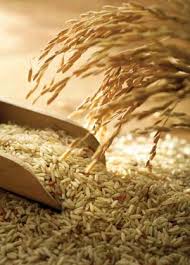
Castor seed meal
Castor seed is the source of castor oil, which has a wide variety of uses. The seeds contain between 40% and 60% oil that is rich in triglycerides, mainly ricinolein. The seed also contains ricin, a water soluble toxin, which is also present in lower concentrations throughout the plant.
The residue that is left after the solvent extraction process of castor cake is known as Castor Seed Meal. The Castor Seed Meal offered by us is highly nutritious and is enriched with proteins, crude fiber, nitrogen, phosphorous, etc. Having high oil and moisture content, Castor Seed Meal is widely used as natural manure.
| Protein | 32% approx |
| Nitrogen | 4-4.5% min |
| Phosphorous | 1% min |
| Potassium | 1% min |
| Moisture | 10-12 % max |
| Oil Content | 0.5% max |
Cotton Seed Meal
Cotton Seed meal is a high protein by-product from the extraction of oil from whole cottonseed. There are two different processing methods used to extract the oil from the cottonseed, and they differ in the amount of oil (fat) they leave in the meal. The amount of oil left in the meal affects its energy value.
It’s produced from Decorticated cottonseed cake, after series of preparatory physical processes followed by multi stage extraction of Oil, under hygienically controlled conditions.
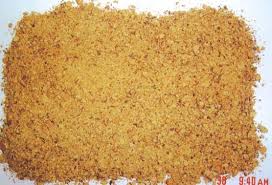
| Protein | 38-40% approx |
| Fibre | 15% Max |
| Sand & Silica | 1.5% Max |
| Oil | Less than 1% |
| Moisture | 10% |
We export an immaculate range of Cotton Seed Products. These products are processed using quality cotton seed and in an utmost hygienic manner. Our seed products can be availed at reasonable prices and are in tandem with industry norms & standards.
Broken Rice:
We offer our buyers with qualitative range of Broken Rice, which is another by-product of rice milling industry. These possess same nutritional content as whole rice and have low economic value as compared to whole rice. We offer these in varied packaging sizes as per the market demands. Our personnel also make sure that these are unadulterated and in accordance with the regulatory norms of the industry.
During the milling process, the white rice grains which are broken by the milling process are classed as broken rice. These broken rice taken out and packed separately as Broken Rice. Our broken rice is best for sweet dishes, infant diets, and for rice flour.
Characteristics
i. 100% Broken rice is used by food industry for making many baby foods, sweet dishes and cereals.
ii. It is also used in other food & beverage processing, and flour processing. The rice flour industry is growing in some countries and tends to use the higher quality broken rice.

| Moisture: | 14% Max |
| Small Broken of Less than 1.25mm | 15% Max |
| Broken of Above 1.25mm size | 12% |
| Whole Kernels | 5% Max |
| Chalky Grains | 7% Max |
| D/D/R/Yellow Kernels | 3% Max |
| Foreign Matter | 0.5% Max |
| Whiteness Degree on Kett | 39 degree Min |
Guar Meal:
During the split manufacturing process of Guar, husk and germ are obtained. Both this are used as a valuable cattle feed as they are quite rich in protein. In international market these are popularly known as “Guar Meal” and are sold worldwide. Guar Meals have contents of “Oil & Albuminoids” (O & A) which are about 50% in germ whereas it is about 25% in husks.
Guar Meal is a by-product after processing the Guar Seed. The extracted guar meal is further processed by toasting at a high temperature to remove Trypsin Inhibitor, thus enhancing its nutritive value. Guar Meal typically comes in 2 forms: (a) Commonly known as Guar Meal Churi, which is in powder form and (b) Guar Meal Korma in granular form. Guar Meal Korma is widely used as replacement to soya meal. Cosmopolitan is a regular exporter of both the types of guar meal.

Uses:
Guar meal is a highest protein containing animal feed in its group. It is having up to 50% of protein with a high digesting content, which improves digesting system of cows or buffaloes. As it is very high in protein it gives extra fat in its milk and also increases the quantity of milk. The byproduct of Guar Gum industry consisting of the guar germ material is called guar meal 50%. The Guar meal 50 after gum Extraction is a potential source of protein and contains about 50% crude protein which is two times more than the level of protein in guar seed. The protein content in guar meal 50% is well comparable with Corn Gluten Meal.
Grades:
1.Guar Korma
2.Guar Churi
| PARAMETER | SPECIFICATION |
| MOISTURE | 6.00 – 8.00 % |
| ASH | 4.00 – 5.00% |
| PROTEIN | 50.00% |
| FAT | 6.00 – 7.00% |
| FIBER | 06.00 – 08.00% |
| SILICA | 0.00 – 1.00% |
| PARAMETER | SPECIFICATION |
| APPEARANCE | White Fine Powder |
| MOISTURE | 6.00 – 7.50% |
| ASH | 4.00 – 5.00% |
| PROTEIN | 38.00 – 40.00% |
| FAT | 5.00 – 7.00% |
| FIBER | 7.00% |
| SILICA | 0.00 – 1.50% |
Typical Analysis For Amino Acid In C50 %
1. Lysine 2.56% Methionine 2.96%
2. Methio + Cystine 1.00% Glycine 5.85%
3. Arginine 9.96% Glycine 5.85%
4. Glysine + Serine 2.56% Histidine 3.75%
5. Isoleucine 26.85% Leucine 2.40%
6. Phenylalanine 3.47% Valine 2.54%
7. Aspartic Acid 4.55% Glutamic Acid 9.24%
8. Proline 13.01% Alanine 1.60%
9. Tyrosine 6.13% Trytophan0.52%
 Spices
Spices
“A tickling treat for your taste buds.”
India, a country that is rich in heritage and tradition, is well known all over the world for its spices. No one can do without Indian spice as they have ruled over the mind and heart of all around the world. India was the nerve centre of the spice trade and it is this very spice that led to various countries invading India as well as the discovery of the Americas by Columbus.
COSMOPOLITAN spices give food its best test and flavor. It provides a variety of spice and these spices are natural from the way they are grown to how they are steam treated, blended and packaged. Pride and care go into each product. No preservatives and colourants are added.
A food is not a dish unless it contains COSMOPOLITAN natural spice tickling the mind as well as the body.
We export spices in whole and as well as in powdered form.

 Pulses
Pulses
Since inception, the Company has been one of the India’s leading pulses importers. We are regularly importing pulses from USA, Canada, Russia, Ukraine, Myanmar, Australia, China, East Africa (Kenya, Tanzania, Mozambique, Malawi and Ethiopia), European origins and other far-east markets.
Different types of pulses being imported by us are:

Peas
Dry peas are mainly divided into two – Green and Yellow peas. Peas have their origin based north-west of Asia. Dry peas are largely grown in Canada, France, Ukraine and the United States. Yellow and green peas are imported into India in large quantities. Canada grows over 3 million tones of peas along with United States growing over 700,000 tones.
Types:
Green Peas
Yellow Peas
Split Peas
Pigeon Peas
Lentils:
Lentils are mainly grown in India and Canada. There are also other countries like Australia, China, United States, Turkey and neighboring European countries which grow Lentils. Half of the world-wide production of lentils is from India. Canada is the largest export producer of lentils in the world. The total world production of Lentils is close to 3-4 million tones.
Types:
Crimson Lentils
Laird Lentils
Richlea Lentils
Eston Lentils
Robin Lentils
Morton Lentils
Chikpeas:
Chickpeas are classified into two types – Desi and Kabuli. Desi Chickpeas are majorly cultivated in India, Pakistan, Australia, and in small parts of the African continent along with small quantities in USA and Canada. Kabuli chickpeas are grown in the Indian subcontinent, Turkey, Iran, Canada and USA. Chickpeas are high on nutrition value with over 23% of protein content. Over 85% of the chickpeas grown worldwide are Desi type.
Types:
Desi Chickpeas
Kabuli Chickpeas
B90 Chickpeas
Chiko Chickpeas
Beans:
Beans are a huge family of pulses and have over a 100 different varieties. The most common ones with an Indian perspective include – Red Kidney Beans, Blackeye Beans, Mung Beans, Black Matpe Beans, and Light speckled Kidney beans. China is one of the largest exporters of kidney beans. They are very high in protein content with a cup of kidney beans (15 grams) provides you with over 30% of the daily value for protein.
Types:
Black Matpe Beans
Red Kidney Beans
Green Mung Beans
Light Speckled Kidney Beans

